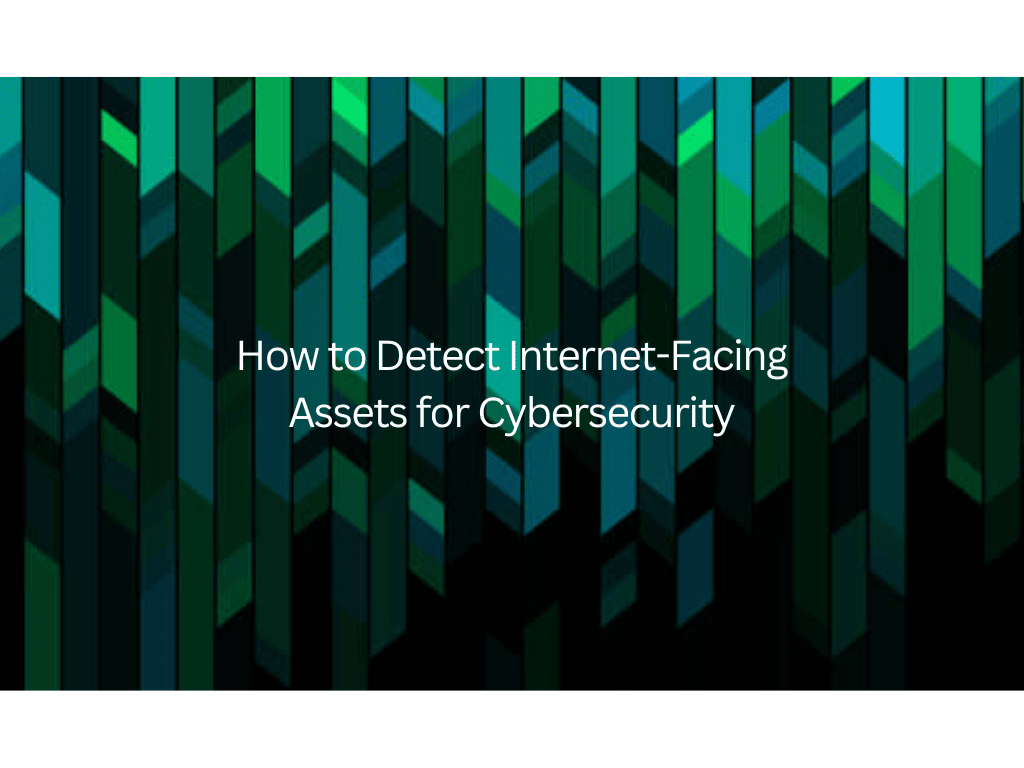In today’s digital age, where organizations rely heavily on interconnected networks and online services, it is crucial to detect and identify internet-facing assets. These assets refer to digital resources, devices, or services that are accessible from the internet. Detecting internet-facing assets is a vital step in maintaining a strong cybersecurity posture and protecting against potential cyber threats.
In this blog post, we will explore effective methods to detect internet-facing assets for cybersecurity purposes.
- Network Scanning: Network scanning is a fundamental technique used to identify internet-facing assets. By performing network scans, you can identify active hosts and services running on them. Various tools like Nmap, OpenVAS, or Nessus can assist in conducting network scans to discover devices connected to your network that are accessible from the internet. Analyzing the scan results can help you identify potential internet-facing assets.
For example, network scanning may reveal servers, routers, firewalls, or other network devices that have direct connections to the Internet. These assets play a crucial role in your organization’s infrastructure and must be properly secured.
- DNS Enumeration: DNS enumeration involves querying DNS servers to gather information about domains, subdomains, and associated IP addresses. By performing DNS enumeration, you can identify publicly registered domain names and subdomains linked to your organization. This helps you understand which assets are directly exposed to the internet.
For instance, DNS enumeration may reveal subdomains such as mail.example.com or vpn.example.com, indicating the presence of email servers or virtual private network (VPN) services that are accessible from the internet.
- Web Application Scanning: Web application scanning is another effective method to identify internet-facing assets. These scans involve using specialized tools to detect vulnerabilities, misconfigurations, and outdated software versions that may expose web applications to potential attacks. By scanning your web applications, you can determine which ones are directly accessible from the internet and take appropriate security measures to protect them.
For example, web application scanning may identify an e-commerce platform, content management system, or online banking system that is accessible from the Internet. Regular scanning and testing of these web applications for security vulnerabilities are essential.
- Firewall and Router Logs: Firewalls and routers are crucial components in securing networks and controlling access to internet-facing assets. Analyzing firewall and router logs can provide valuable insights into incoming and outgoing traffic, allowing you to identify connections and requests made to your network from external sources. Monitoring and analyzing these logs help in detecting internet-facing assets.
- Certificate Transparency Logs: Certificate Transparency (CT) logs are public repositories that store information about SSL/TLS certificates issued by Certificate Authorities (CAs). Monitoring CT logs can help identify domain names and subdomains associated with SSL/TLS certificates. This aids in detecting internet-facing assets that utilize encryption for secure communication.
- Internet-Wide Scanning: Leveraging internet-wide scanning projects, such as Censys or Shodan, can provide a broader view of internet-facing assets. These projects continuously scan and collect information about internet-connected devices and services worldwide. By using their databases or APIs, you can search for specific assets, ports, or vulnerabilities.
For example, you can search for specific device models or services to identify devices like network cameras or industrial control systems that are directly accessible from the internet.
In conclusion, detecting internet-facing assets is vital for maintaining a robust cybersecurity posture. By utilizing network scanning, DNS enumeration, web application scanning, analyzing firewall and router logs, monitoring certificate transparency logs, and leveraging internet-wide scanning projects, you can effectively identify assets that are accessible from the internet. This knowledge allows you to implement appropriate security measures and safeguards to protect these assets from potential cyber threats. Regular monitoring and updates are essential as new assets may be added or removed over time.




